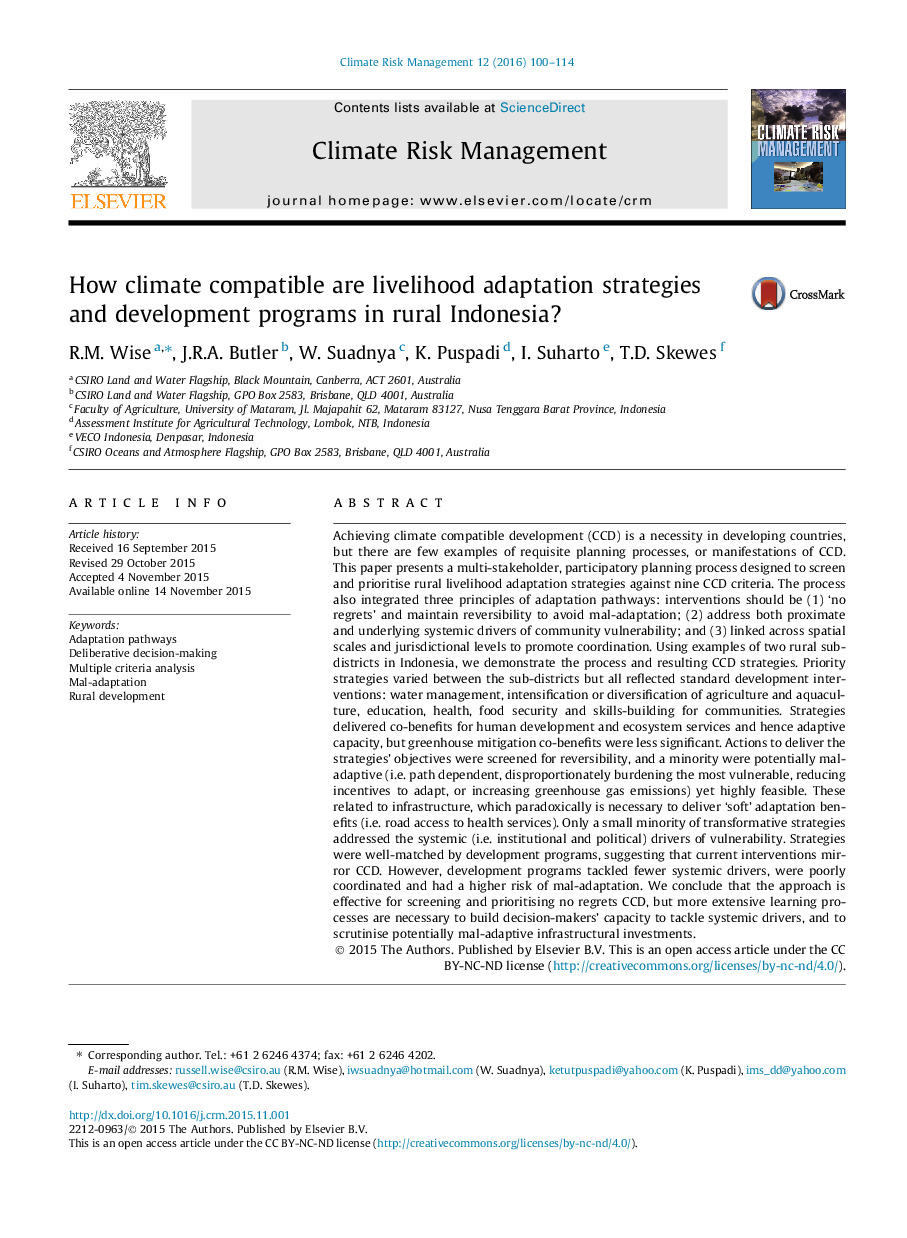| کد مقاله | کد نشریه | سال انتشار | مقاله انگلیسی | نسخه تمام متن |
|---|---|---|---|---|
| 1051198 | 1484880 | 2016 | 15 صفحه PDF | دانلود رایگان |
Achieving climate compatible development (CCD) is a necessity in developing countries, but there are few examples of requisite planning processes, or manifestations of CCD. This paper presents a multi-stakeholder, participatory planning process designed to screen and prioritise rural livelihood adaptation strategies against nine CCD criteria. The process also integrated three principles of adaptation pathways: interventions should be (1) ‘no regrets’ and maintain reversibility to avoid mal-adaptation; (2) address both proximate and underlying systemic drivers of community vulnerability; and (3) linked across spatial scales and jurisdictional levels to promote coordination. Using examples of two rural sub-districts in Indonesia, we demonstrate the process and resulting CCD strategies. Priority strategies varied between the sub-districts but all reflected standard development interventions: water management, intensification or diversification of agriculture and aquaculture, education, health, food security and skills-building for communities. Strategies delivered co-benefits for human development and ecosystem services and hence adaptive capacity, but greenhouse mitigation co-benefits were less significant. Actions to deliver the strategies’ objectives were screened for reversibility, and a minority were potentially mal-adaptive (i.e. path dependent, disproportionately burdening the most vulnerable, reducing incentives to adapt, or increasing greenhouse gas emissions) yet highly feasible. These related to infrastructure, which paradoxically is necessary to deliver ‘soft’ adaptation benefits (i.e. road access to health services). Only a small minority of transformative strategies addressed the systemic (i.e. institutional and political) drivers of vulnerability. Strategies were well-matched by development programs, suggesting that current interventions mirror CCD. However, development programs tackled fewer systemic drivers, were poorly coordinated and had a higher risk of mal-adaptation. We conclude that the approach is effective for screening and prioritising no regrets CCD, but more extensive learning processes are necessary to build decision-makers’ capacity to tackle systemic drivers, and to scrutinise potentially mal-adaptive infrastructural investments.
Journal: Climate Risk Management - Volume 12, 2016, Pages 100–114
